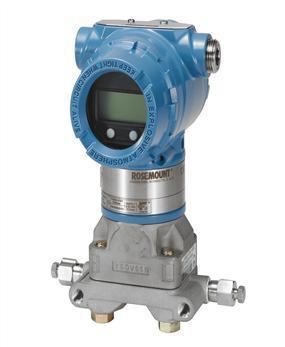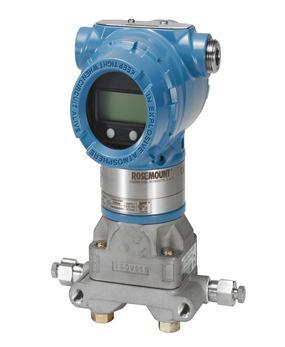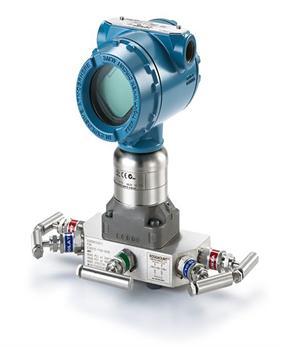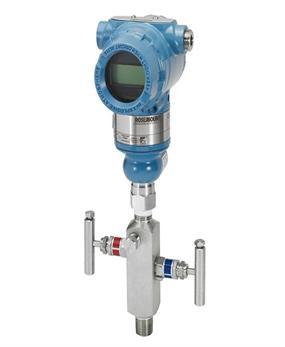BLOG
Understanding the Impact of Pressure Fluctuations on Drying Performance
Brian Craig
July 11, 2023
Efficient drying processes play a critical role in numerous industries, ranging from food processing and pharmaceuticals to textiles and beyond. The ability to effectively remove moisture from products is vital for preserving quality, extending shelf life, and ensuring optimal performance. However, one often overlooked factor that can significantly impact drying performance is pressure fluctuations within the drying system.
Pressure fluctuations can arise from various sources, including equipment malfunctions, varying loads, and inadequate system design. These fluctuations can have far-reaching consequences, affecting not only drying efficiency but also the overall quality and consistency of the dried products. To tackle this challenge, employing pressure transmitters in drying processes can prove to be a game-changer.
In this blog post, we will delve into the intricate relationship between pressure fluctuations and drying performance. We will examine the causes and effects of pressure fluctuations, and highlight the pivotal role played by pressure transmitters in monitoring and mitigating these fluctuations.
.png)
Importance of Accurate Pressure Measurements in Drying Processes
Accurate pressure measurements are critical for maintaining optimal drying conditions. Pressure directly affects the airflow, temperature distribution, and moisture removal capabilities within the drying system. By ensuring precise pressure control, operators can regulate the drying process more effectively, leading to improved efficiency and product quality. Accurate pressure measurements enable the identification of pressure fluctuations, allowing timely adjustments and interventions to maintain stable and desired drying conditions.
Effects of Pressure Fluctuations on Drying Performance
Pressure fluctuations within drying systems can have significant effects on the overall drying performance. These effects can impact the efficiency, quality, and consistency of the drying process, ultimately influencing the final product. Here are some key effects of pressure fluctuations on drying performance:
- Increased Drying Time and Energy Consumption: Pressure fluctuations can disrupt the airflow and temperature distribution within the drying system. When the pressure drops below the desired level, the drying process slows down, leading to extended drying times. Consequently, this increase in drying time directly translates to higher energy consumption, as more time and resources are required to achieve the desired moisture content.
- Uneven Drying and Moisture Content Distribution: Pressure fluctuations can create variations in airflow and temperature across the drying system. These variations can cause uneven drying and moisture content distribution within the product being dried. Certain areas may be subjected to higher or lower airflow, resulting in inconsistent moisture removal. As a result, some portions of the product may become over-dried, while others remain under-dried. This lack of uniformity affects product quality, leading to potential issues such as texture variations, reduced shelf life, and compromised structural integrity.
- Product Quality and Consistency: Pressure fluctuations can impact the overall quality of the dried product. Fluctuations in pressure can lead to changes in the drying rate and moisture extraction, resulting in alterations in the chemical and physical properties of the product. For example, in the food industry, pressure fluctuations during drying can lead to color changes, loss of nutritional value, and diminished taste and texture. Similarly, in pharmaceutical manufacturing, inconsistent drying caused by pressure fluctuations can affect the efficacy and stability of medications.
- Equipment Wear and Tear: Pressure fluctuations can put additional stress on the drying equipment. Frequent pressure spikes or drops can lead to increased wear and tear on the system components, including fans, blowers, valves, and filters. This can result in reduced equipment lifespan, more frequent maintenance requirements, and potential system failures. Unplanned downtime and increased maintenance costs can significantly impact production schedules and overall operational efficiency.
Benefits of Using Pressure Transmitters to Mitigate Pressure Fluctuations
- Real-Time Monitoring: Pressure transmitters provide real-time data on pressure levels within the drying system. This allows operators to promptly identify pressure fluctuations, deviations, or anomalies. Real-time monitoring enables proactive decision-making and the implementation of necessary corrective actions, reducing the potential impact of pressure fluctuations on drying performance.
- Process Optimization: By using pressure transmitters, operators can optimize the drying process by maintaining consistent pressure levels. This results in improved drying efficiency, reduced drying times, and lower energy consumption. Pressure transmitters facilitate the adjustment of drying parameters, such as airflow rates and temperature settings, based on accurate pressure measurements, ensuring optimal conditions for moisture removal.
- Quality Assurance: Pressure fluctuations can lead to uneven drying and variations in product quality. Pressure transmitters help mitigate these issues by enabling precise control of pressure levels throughout the drying process. Consistent pressure ensures uniform moisture removal, resulting in consistent product quality, reduced rejects, and improved customer satisfaction.
- Preventive Maintenance: Pressure transmitters also aid in preventive maintenance. By continuously monitoring pressure, they can detect abnormal pressure fluctuations that may indicate equipment malfunctions or system issues.
By understanding the how Pressure transmitters play a vital role in monitoring and controlling pressure within drying systems. They provide accurate pressure measurements in real-time, enabling operators to detect and mitigate pressure fluctuations. Implementing pressure transmitters in drying processes is a valuable investment, offering enhanced control and optimization of the drying performance. At The Transmitter Shop, we offers high-quality pressure transmitters, flow transmitters, level transmitters from trusted brands like Foxboro, Rosemount etc.
Related Posts
Pressure Monitoring in Pump Systems: A Comprehensive Guide
Common Challenges in Air Flow Measurement and How to Overcome Them
Monitoring and Controlling Energy Production in Power Plants
Understanding Pressure Ranges and Units for Fluid System Monitoring
The Benefits and Challenges of HVAC System Balancing
An Ultimate Selection Guide for Flow Transmitters
Procedure to Calculate Accuracy of Pressure Transmitter Discussed
Pressure Transmitters vs. Pressure Transducers: Learn the Differential Characteristics
Multivariable Transmitter: What Is It and How Does It Work?
How Do You Test for 4 to 20mA Signal in a Pressure Transmitter?
Temperature Transmitter: How to Select The Efficient One for Your Application?
Flow Meter vs Flow Transmitter: Know the Difference
Absolute and Gauge Pressure Transmitters - Overview and Working Principle
HART Communication Protocol: Overview, Working Principle, Benefits in Industrial Automation
What is Absolute Pressure Transmitter & how does it work?
How Do You Calibrate A Flow Transmitter?
Remote Seals: Significance, Working Principle & Applications
How to Select Pressure Transmitter for Your Application?
How to Choose Diaphragm Seals for Your Application?
Difference in Conventional Transmitters and Smart Transmitters
What Are Diaphragm Seals and Their Types?
Rosemount 2088 Vs Rosemount 3051 – A Few Points of Differences Discussed
Rosemount 3051S vs 3051C Transmitter – What is Your Choice?
Impact of Shock and Vibration on Pressure Transducer
Safety Tips for Differential Pressure Transmitter Operation
Factors to Consider When Choosing a Pressure Transmitter Manifold
Tips to Improve the Performance of Pressure Sensors
Important Calibration Tips for Pressure Sensors
5 Most Popular Pressure Transmitter Technologies
Factors of Consideration When Choosing Pressure Transmitters
Tips to Augment the Performance and Service Life of Pressure Transmitter
Factors To Be Considered While Differentiating $40 and $400 Pressure Transmitters
An Unconventional Guide to Selecting the Right Pressure Sensor
3 Major Pressure Transmitter Technologies That Made the Device Popular
The Features and Benefits of Rosemount 1199 Direct Mount Transmitters
What are the Steps Involved in Calibrating Pressure Gauge?
All Important Questions on Reconditioned Transmitters Answered
Is Remanufactured Transmitter a Better Option than a New One?
Differential Pressure Transmitters: How Do They Help in Flow Measurements?
3 Whats that Explain How Often You Should Calibrate Pressure Transducer
Guidelines for Troubleshooting Pressure Transducers
Learn How to Calibrate a Pressure Transmitter – II
Learn How to Calibrate a Pressure Transmitter
Know Three Interesting Uses of Pressure Transmitters











